

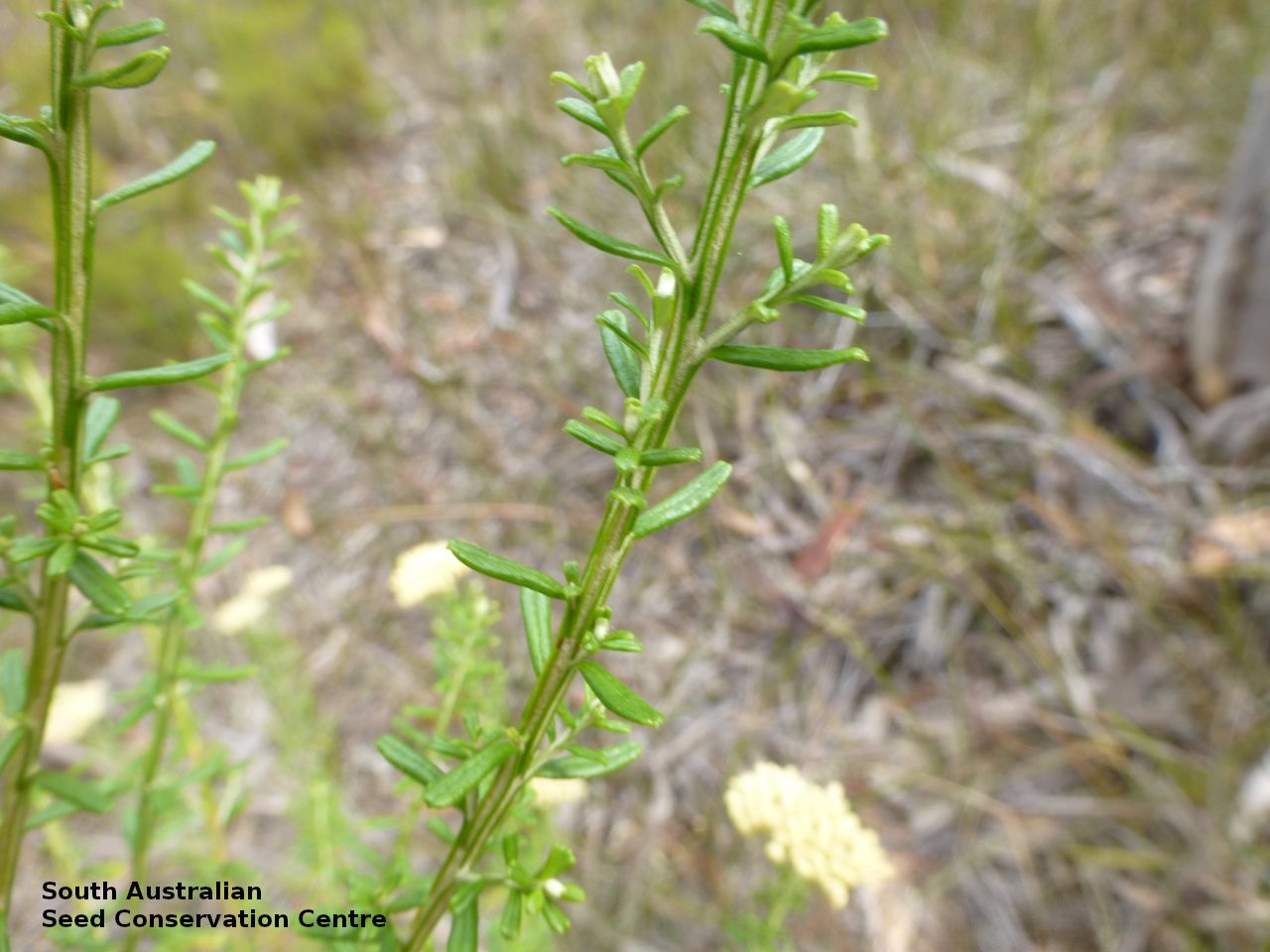
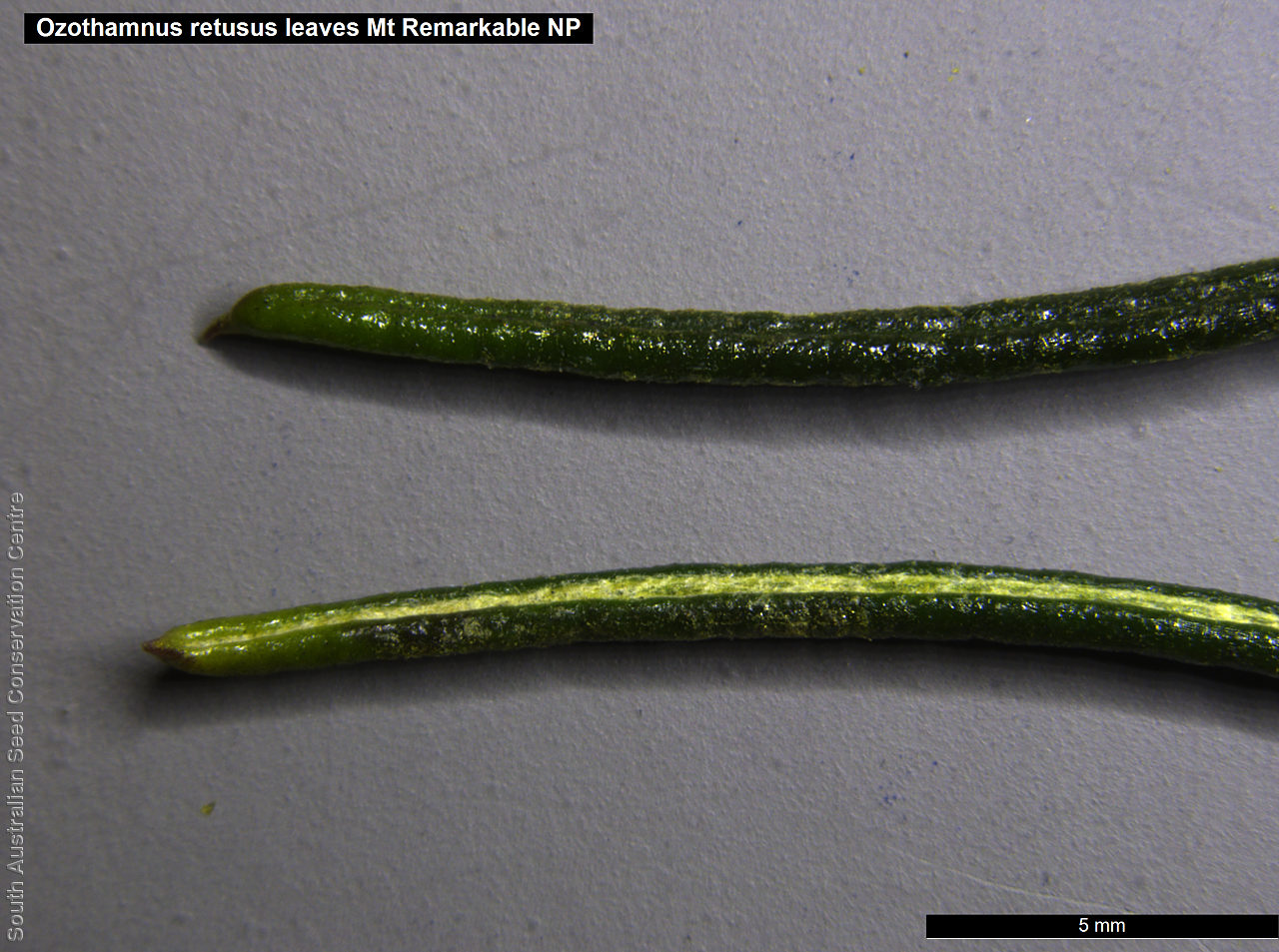
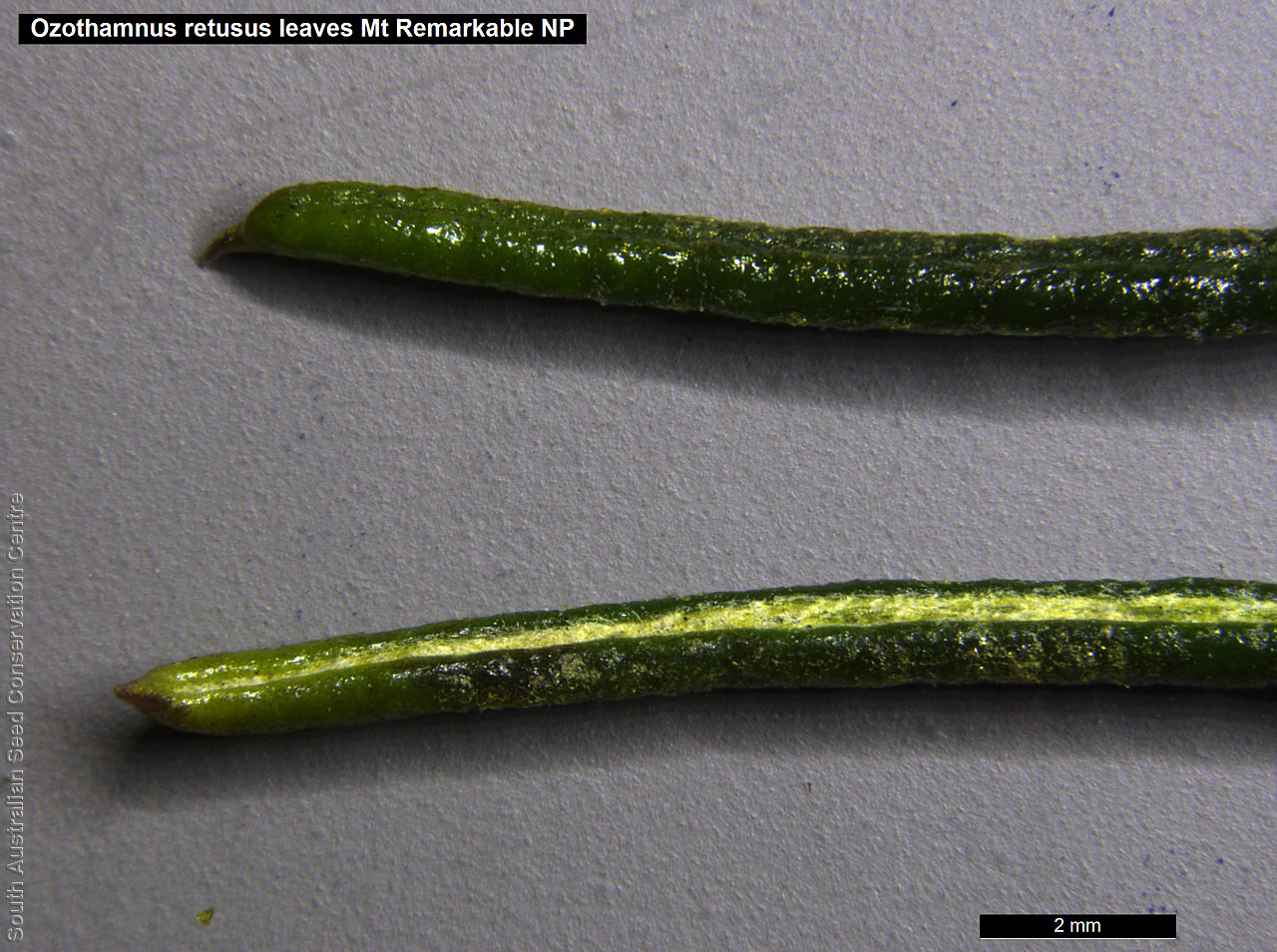
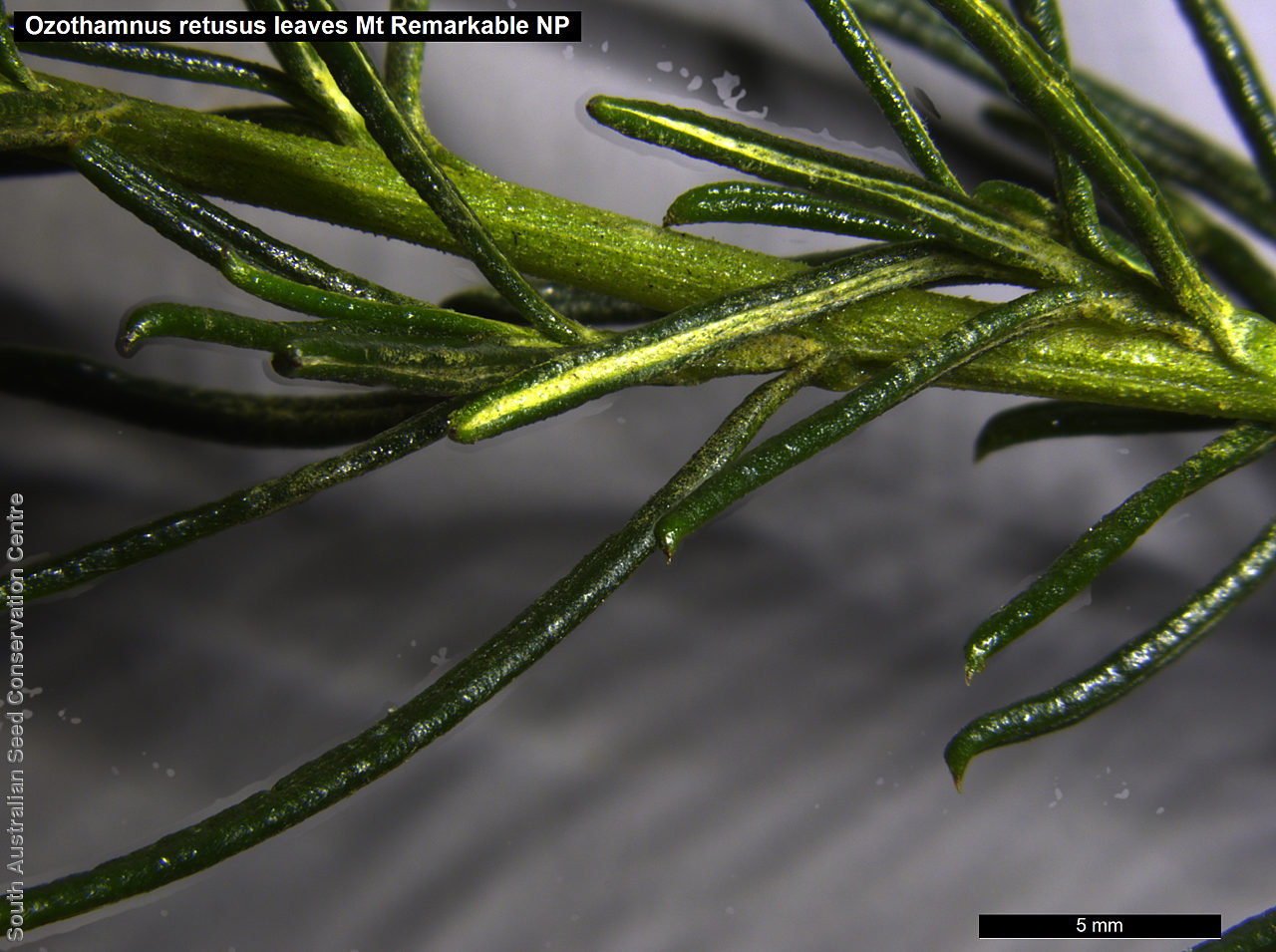


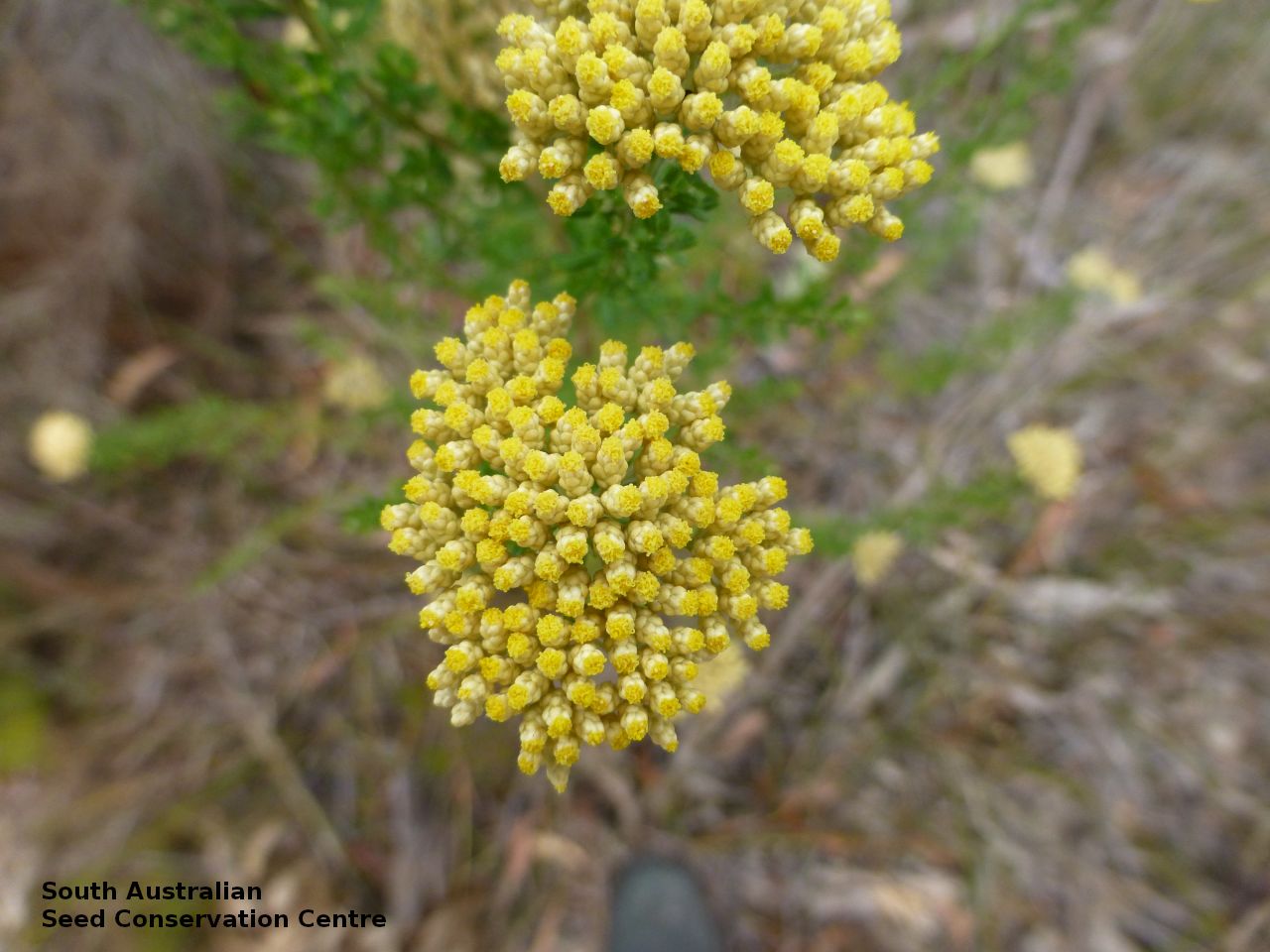
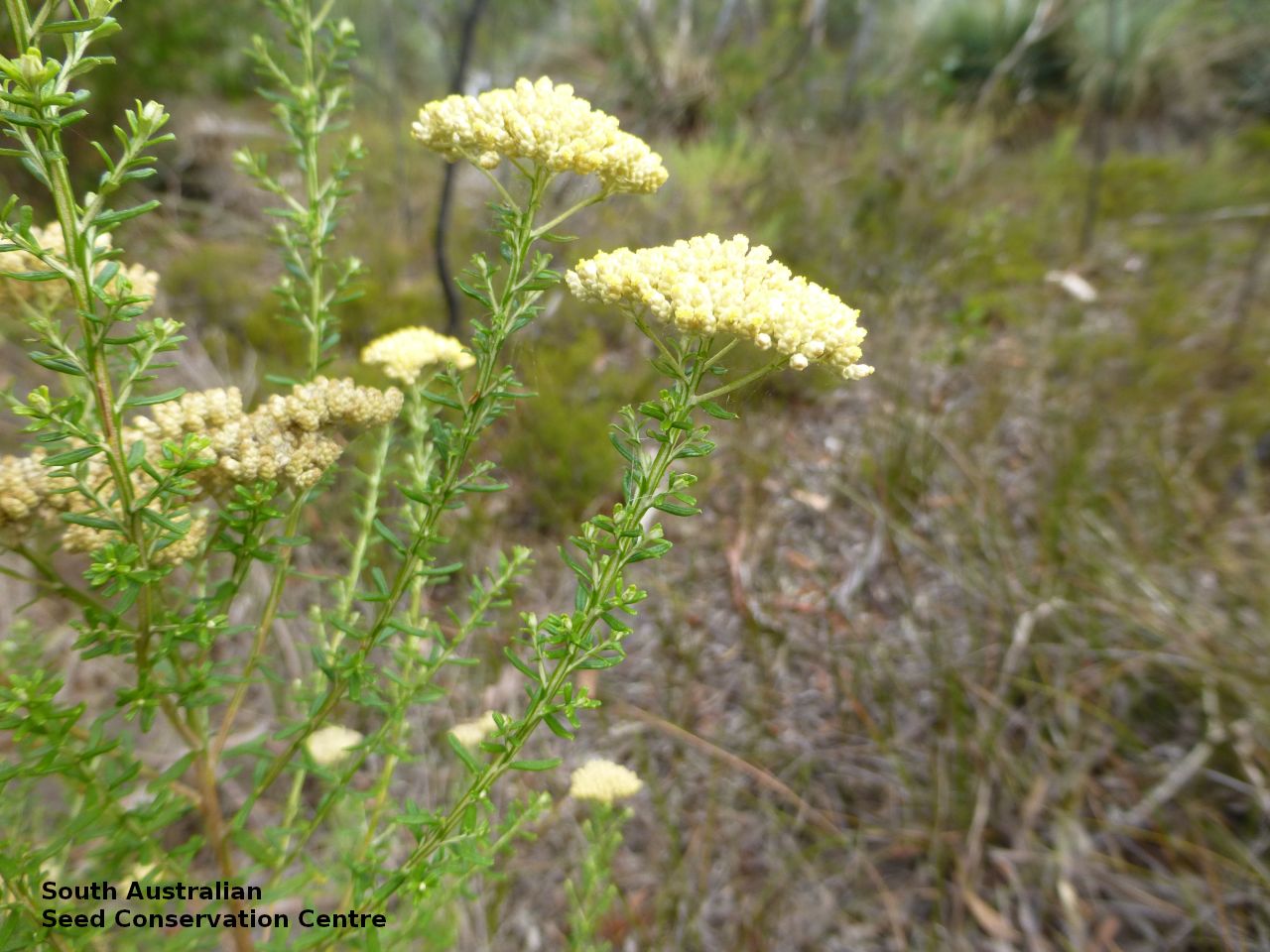





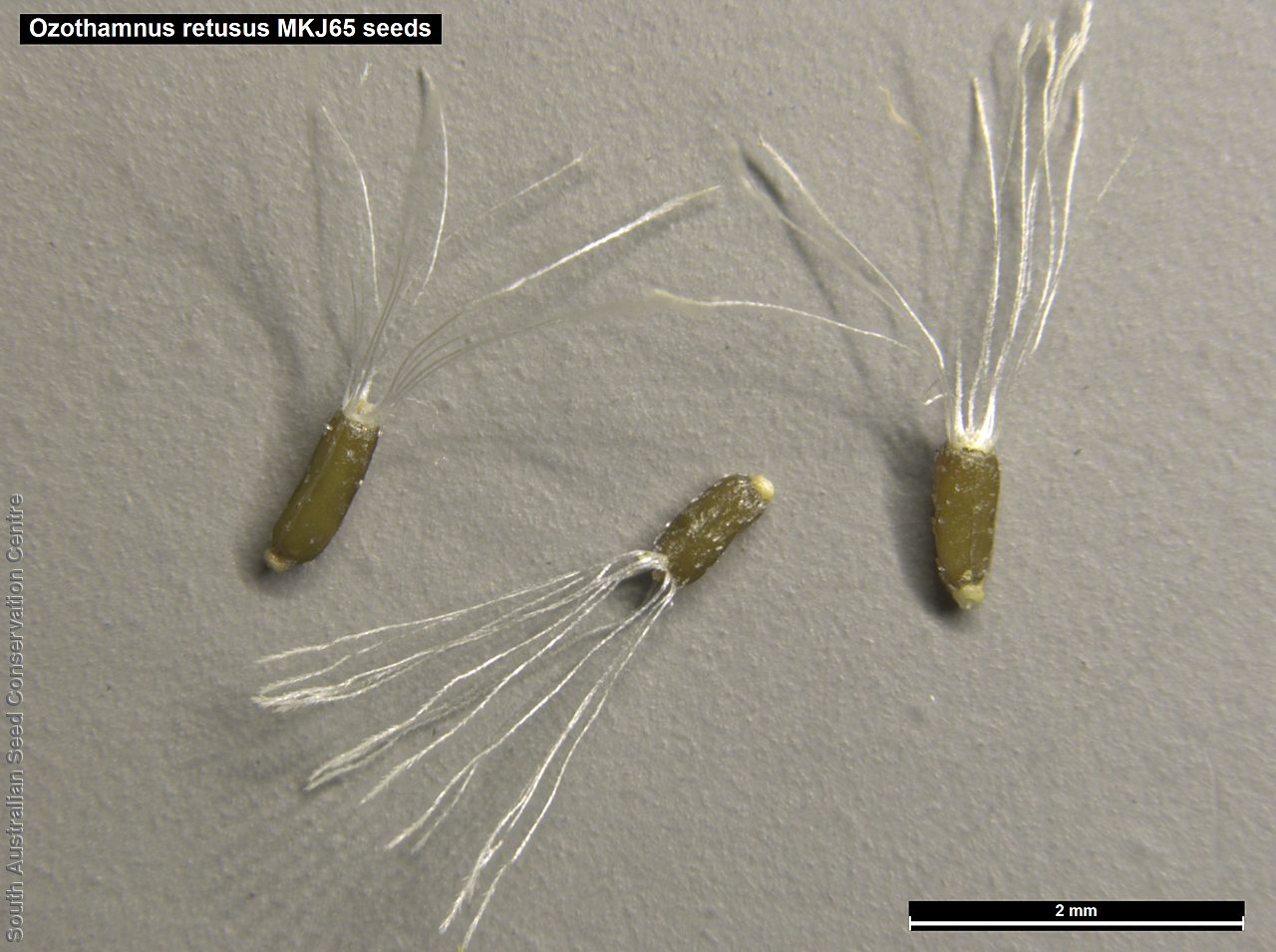


Botanical art
Prior names
Helichrysum retusum
Helichrysum adnatum, partly
Ozothamnus bilobus
Helichrysum bilobum
Etymology
Ozothamnus, from the Greek 'ozo', meaning to smell and 'thamnos', meaning shrub, alluding to the fragrant foliage when crushed. Retusus,from the Latin 'retusus', meaning rounded, notched at the apex, referring to the retuse apex tip being bent back under the leaf..
Distribution and status
Found in the southern part of South Australia growing in mallee vegetation and rocky ground. Also found in Victoria. Native. Common in South Australia. Common in Victoria.
Herbarium regions: Flinders Ranges, Eyre Peninsula, Northern Lofty, Murray, Yorke Peninsula, Southern Lofty, Kangaroo Island, South Eastern, Green Adelaide
NRM regions: Adelaide and Mount Lofty Ranges, Eyre Peninsula, Kangaroo Island, Northern and Yorke, South Australian Arid Lands, South Australian Murray-Darling Basin, South East
AVH map: SA distribution map (external link)
Plant description
Erect shrub to 1.5 m high, with branchlets covered in dense cottony hairs. Leaves spreading; sessile, linear, to 18 mm long and 2.5 mm wide; glabrous and scabrous above with dense cottony hairs and glandular beneath; apex retuse or emarginate, or with a few leaves with minutely decurved-mucronate points; base decurrent into 2 prominent green, glabrous ridges; margins revolute. Inflorescences, hemispherical, to 5.5 cm diameter with cream to yellow flowers. Flowering between October and December. Fruits are dense cream- brown heads. Seeds are brown cylindrical seed to 1 mm long and 0.5 mm wide, covered sparsely with short white hairs and with a long white pappus at one end. Seed embryo type is spatulate, fully-developed.
Seed collection and propagation
Collect seeds between January and February. Collect mature seed heads turning a creamy-brown. Place the heads in a tray and leave to dry for 1-2 weeks, then rub the heads gently with your hands to dislodge the seeds. Use a sieve to separate the unwanted material. Store the seeds with a desiccant such as dried silica beads or dry rice, in an air tight container in a cool and dry place. From one collection, the seed viability was average, at 75%.
| Location | No. of seeds (weight grams) | Number of plants | Date collected | Collection number Collection location | Date stored | % Viability | Storage temperature |
|---|---|---|---|---|---|---|---|
| BGA MSB | 44,500 (18.3 g) 44,500 (18.3 g) | 60 | 12-Jan-2005 | MKJ65 Eyre Peninsula | 31-Mar-2006 | 100% | -18°C |
| MSB | 100,000 (30.8 g) | 50 | 13-Dec-2007 | RJB76282 Flinders Ranges | 90% |
Number of plants: This is the number of plants from which the seeds were collected.
Collection location: The Herbarium of South Australia's region name.
% Viability: Percentage of filled healthy seeds determined by a cut test or x-ray.